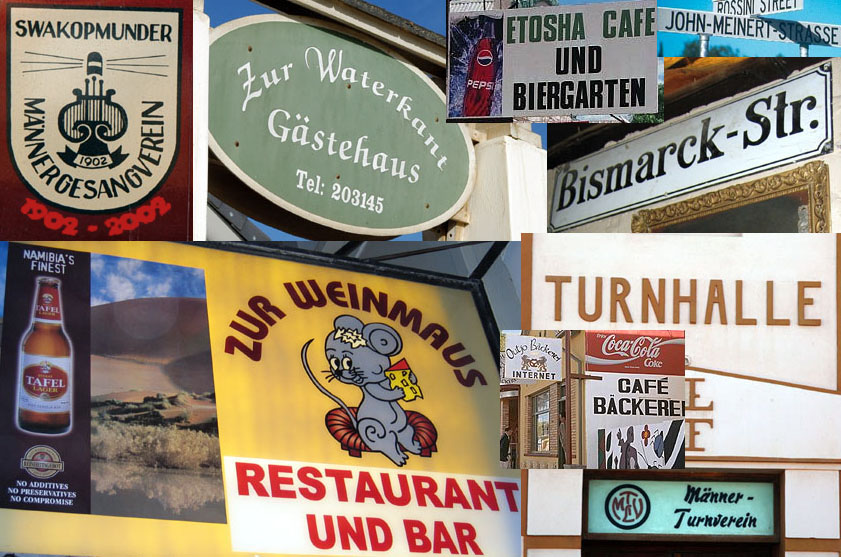Languages of Namibia on:
[Wikipedia]
[Google]
[Amazon]
 The most widely spoken languages are Oshiwambo dialects by 49% of households in the country, then Khoekhoegowab by 11%; Afrikaans by 10%; RuKwangali by 9%; Otjiherero by 9%, and Silozi by 4.71%. Other languages include the Bantu languages Setswana, Gciriku, Fwe, Kuhane, Mbukushu, Yeyi; and the Khoisan
The most widely spoken languages are Oshiwambo dialects by 49% of households in the country, then Khoekhoegowab by 11%; Afrikaans by 10%; RuKwangali by 9%; Otjiherero by 9%, and Silozi by 4.71%. Other languages include the Bantu languages Setswana, Gciriku, Fwe, Kuhane, Mbukushu, Yeyi; and the Khoisan
File:Sprachenverteilung Khoekhoegowab Namibia (2011).svg, Distribution of Khoekhoegowab
Image:Distribution of Oshiwambo in Namibia.png, Distribution of Oshiwambo
Image:Distribution of Nama (Damara) in Namibia.png, Distribution of Khoekhoegowab
Image:Distribution of Afrikaans in Namibia.png, Distribution of Namibian Afrikaans
File:Distribution of Otjiherero in Namibia.png, Distribution of Otjiherero
File:Distribution of Kavango languages in Namibia.png, Distribution of Kavango languages
File:Distribution of Caprivi languages in Namibia.png, Distribution of Silozi
Namibia
Namibia, officially the Republic of Namibia, is a country on the west coast of Southern Africa. Its borders include the Atlantic Ocean to the west, Angola and Zambia to the north, Botswana to the east and South Africa to the south; in the no ...
, despite its scant population, is home to a wide diversity of languages, from multiple language families
A language family is a group of languages related through descent from a common ancestor, called the proto-language of that family. The term ''family'' is a metaphor borrowed from biology, with the tree model used in historical linguistics ana ...
: Germanic, Bantu, and the various Khoisan
Khoisan ( ) or () is an Hypernymy and hyponymy, umbrella term for the various Indigenous peoples of Africa, indigenous peoples of Southern Africa who traditionally speak non-Bantu languages, combining the Khoekhoen and the San people, S─ün peo ...
families. When Namibia was administered by South Africa
South Africa, officially the Republic of South Africa (RSA), is the Southern Africa, southernmost country in Africa. Its Provinces of South Africa, nine provinces are bounded to the south by of coastline that stretches along the Atlantic O ...
, Afrikaans
Afrikaans is a West Germanic languages, West Germanic language spoken in South Africa, Namibia and to a lesser extent Botswana, Zambia, Zimbabwe and also Argentina where there is a group in Sarmiento, Chubut, Sarmiento that speaks the Pat ...
, German, and English enjoyed an equal status as official languages. Upon Namibian independence in 1990, English was enshrined as the nation's sole official language in the constitution of Namibia. German and Afrikaans were stigmatised as relics of the colonial past, while the rising of Mandela's Youth League and the 1951 Defiance Campaign spread English among the masses as the language of the campaign against apartheid.
Language demographics
 The most widely spoken languages are Oshiwambo dialects by 49% of households in the country, then Khoekhoegowab by 11%; Afrikaans by 10%; RuKwangali by 9%; Otjiherero by 9%, and Silozi by 4.71%. Other languages include the Bantu languages Setswana, Gciriku, Fwe, Kuhane, Mbukushu, Yeyi; and the Khoisan
The most widely spoken languages are Oshiwambo dialects by 49% of households in the country, then Khoekhoegowab by 11%; Afrikaans by 10%; RuKwangali by 9%; Otjiherero by 9%, and Silozi by 4.71%. Other languages include the Bantu languages Setswana, Gciriku, Fwe, Kuhane, Mbukushu, Yeyi; and the Khoisan Naro
Naro ( ) is a ''comune'' in the province of Agrigento, on the island of Sicily, Italy. It is bounded by the comuni of Agrigento, Caltanissetta, Camastra, Campobello di Licata, Canicattì, Castrofilippo, Delia, Favara, Licata, Palma di ...
, ŪāX├│├Ą, Kung-Ekoka, ŪéKx╩╝auŪü╩╝ein and Kxoe.
English, the sole official language, is spoken by 3.4% of people as their native language.
As of 2014 Portuguese was spoken by 4ŌĆō5% of the total population, made up mostly of the Angolan community. Although the number of Angolans in Namibia declined from 2014 to 2015, affected by the neighbouring country's economic crisis, there are still around 100,000 Portuguese speakers in Namibia as of 2024, equivalent to 3.3% of the country's population. The language is now offered as an optional subject in many schools throughout the country.
Indigenous languages are included in the school syllabus at primary level. From secondary level English is the medium of instruction. English is the main lingua franca in the north and Afrikaans ( Namibian Afrikaans) in the south. English and Afrikaans are both widely spoken in Windhoek.
Languages most often spoken in Namibian households
Source: 2001 Census and 2011 CensusSee also
* Namibian Sign Language * German language in NamibiaReferences
{{Africa in topic, Languages of